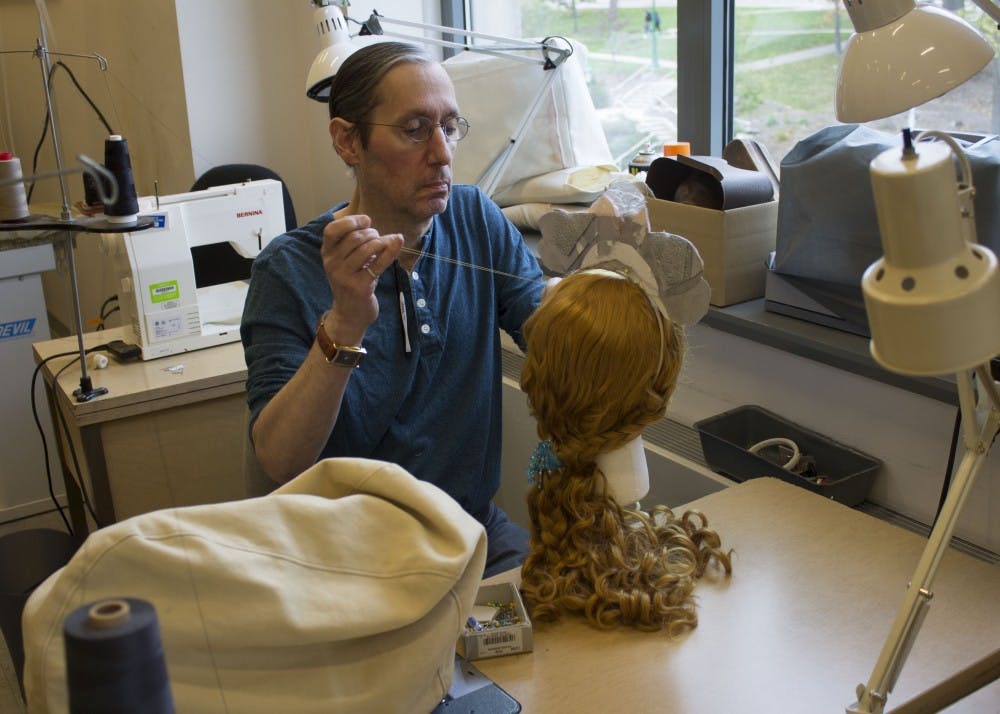Hidden away on the second floor of the Lee Norvelle Theatre and Drama Center, the costume design shop, a well-lit room with sketches hanging on the walls and the faint hum of a sewing machine, is where productions come to life.
“The process starts with deciding the world we want to create,” Courtney Foxworthy, a third-year master of fine arts candidate in costume design, said. “And then working together to create it.”
From start to finish, the costume design process is a collaborative effort among all members of the show’s company.
“I love drawing out the designs," Linda Pisano, head of the design and technology at the IU Department of Theatre, Drama and Contemporary Dance, said. "I love knowing this picture I draw is going to come to life. Just like scholars are publishing books, I’m designing costumes.”
As for costumers' part in producing a show, Pisano said she studies the script and looks for inspiration in images and textiles.
Foxworthy is currently the head costumer designer for the play "Peter and the Starcatcher," which will be performed Oct. 27 to Nov. 4 at the Ruth N. Halls Theatre.
But that's just one of the 10 shows this season, meaning there’s always something going on in the shop.
“When we aren’t designing, we’re stitching together costumes for other shows,” Foxworthy said.
Beyond the creative part of costuming, there’s also the business side.
“You’ve got to figure out where you’re going to source and get materials,” Foxworthy said. “Whether it’s from the opera or we have it in our costume stock or we have to buy them.”
Shopping for fabrics often involves traveling to New York City’s Garment District.
“It takes about a day to plan, itemize and budget before a shop,” Pisano said, about her trips to New York City. “I then have my messenger bag, my tennis shoes, a calculator and a notebook, and I jump right in.”
One challenge for costumers is working around quick changes. This is when an actor has to go from one costume to the next in a matter of seconds.
“We go and watch rehearsals and have to think about if someone exits stage right or stage left and if we’re going to use zippers or magnets or snaps,” Foxworthy said.
In addition, they have to design costumes knowing which pieces will come off and in what order.
“We’ve had times when there’s three to four people changing an actor in 20 seconds,” Pisano said. “Then they come out and look completely different.”
But the audience often doesn’t notice things like this, and that’s how the costumers like it.
“Our job is to not let them see our effort,” Pisano said.
However, that doesn’t mean costume design is without reward.
“When you sit in the audience and see all the costumes on the stage, there’s this moment where you think to yourself, ‘This is my job. This is what I get paid for,’” Pisano said.




